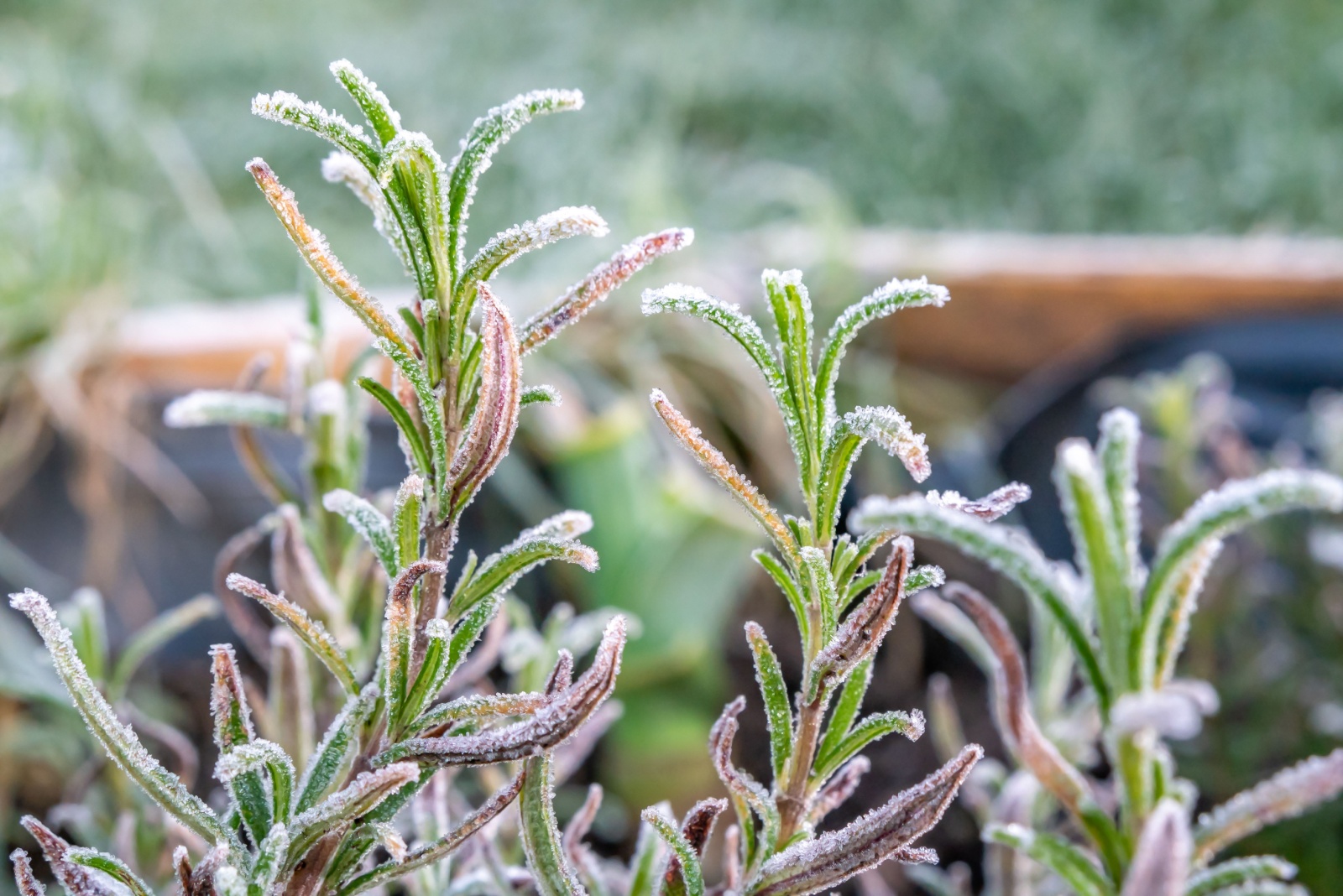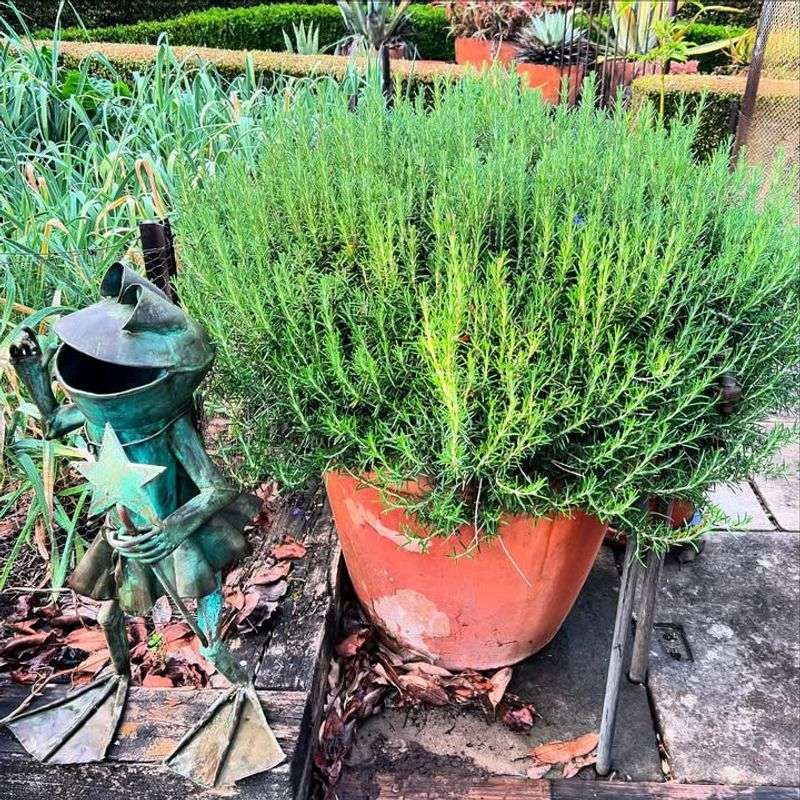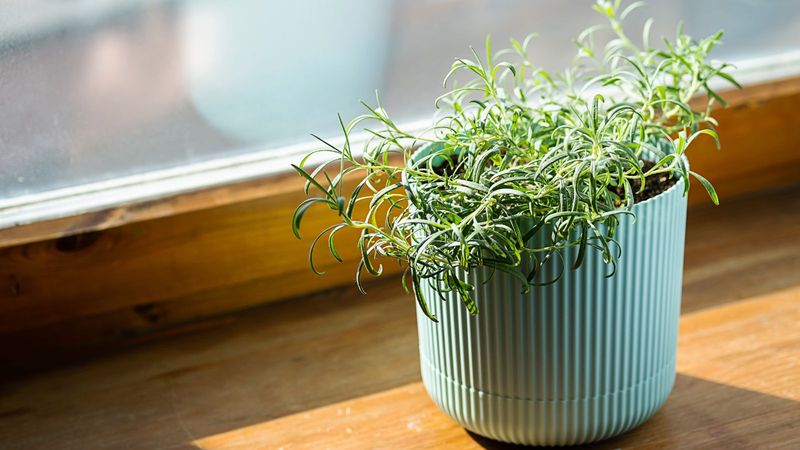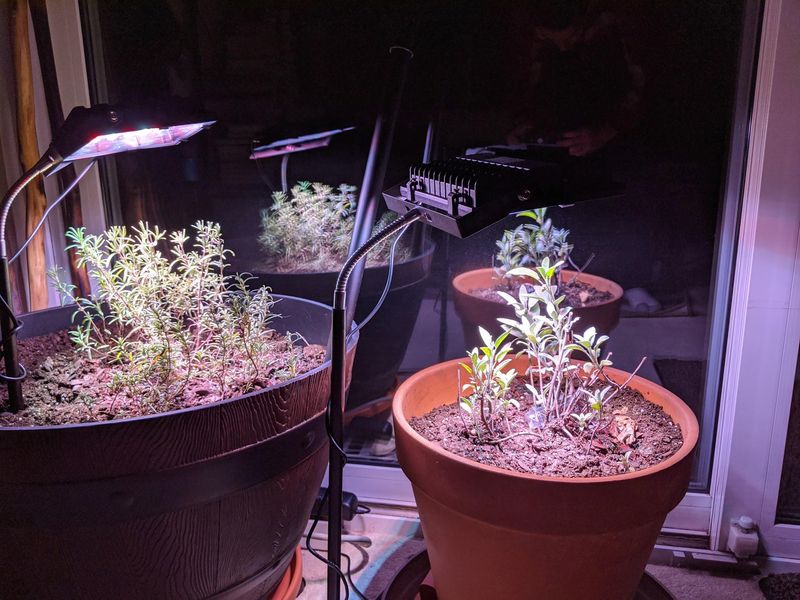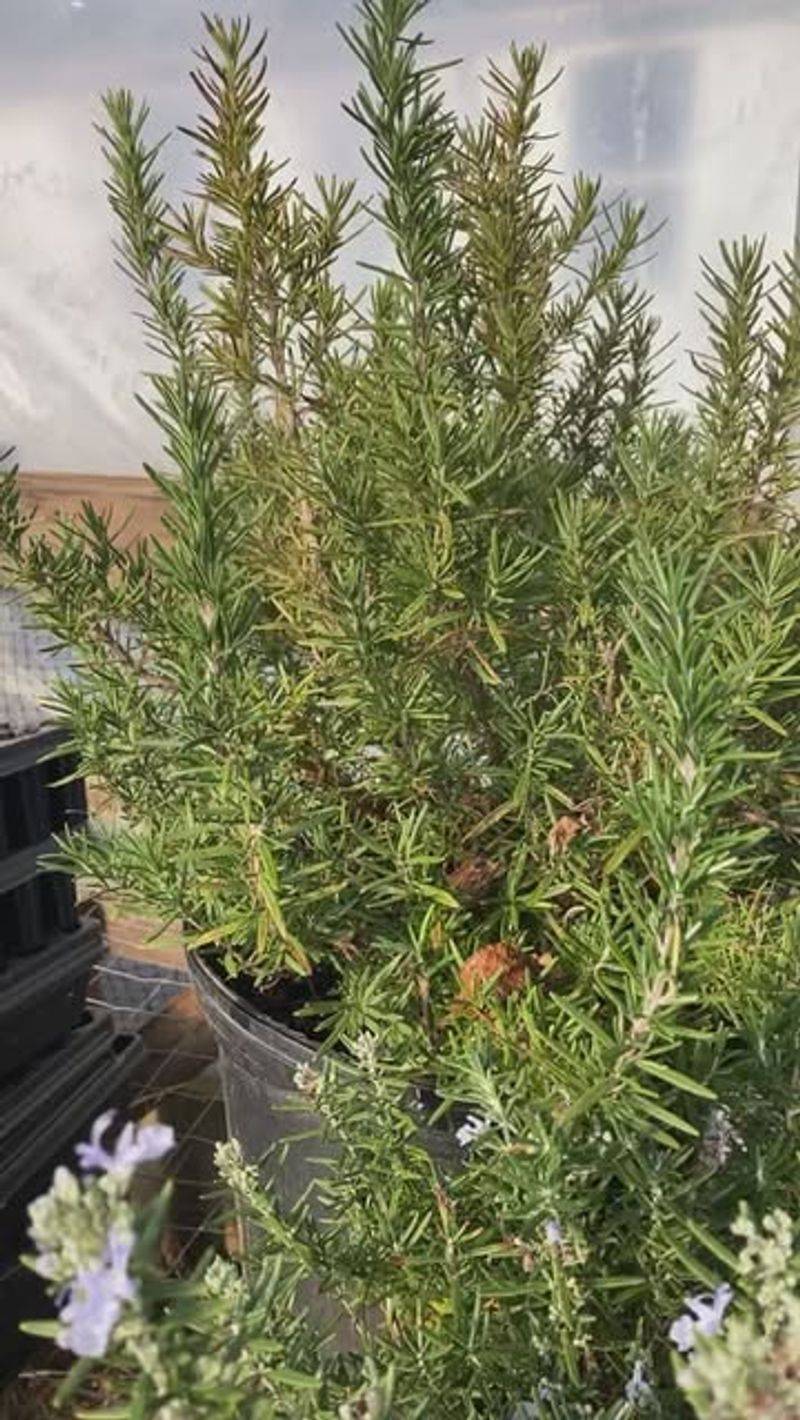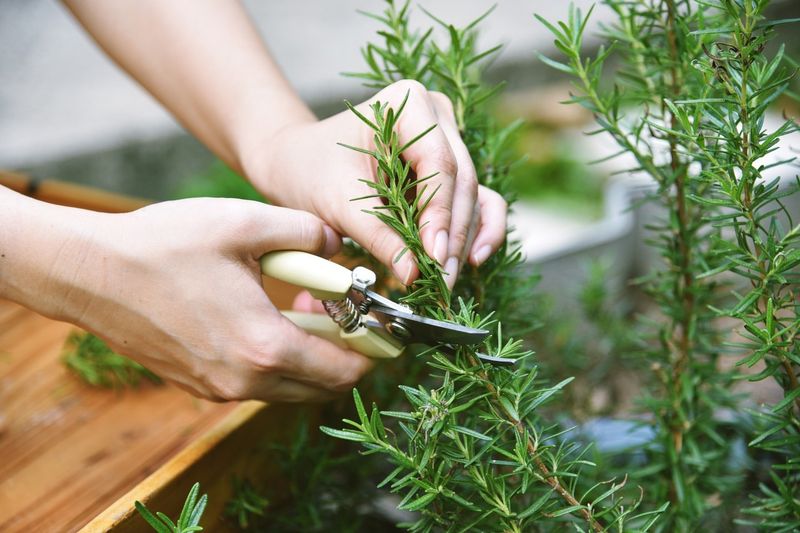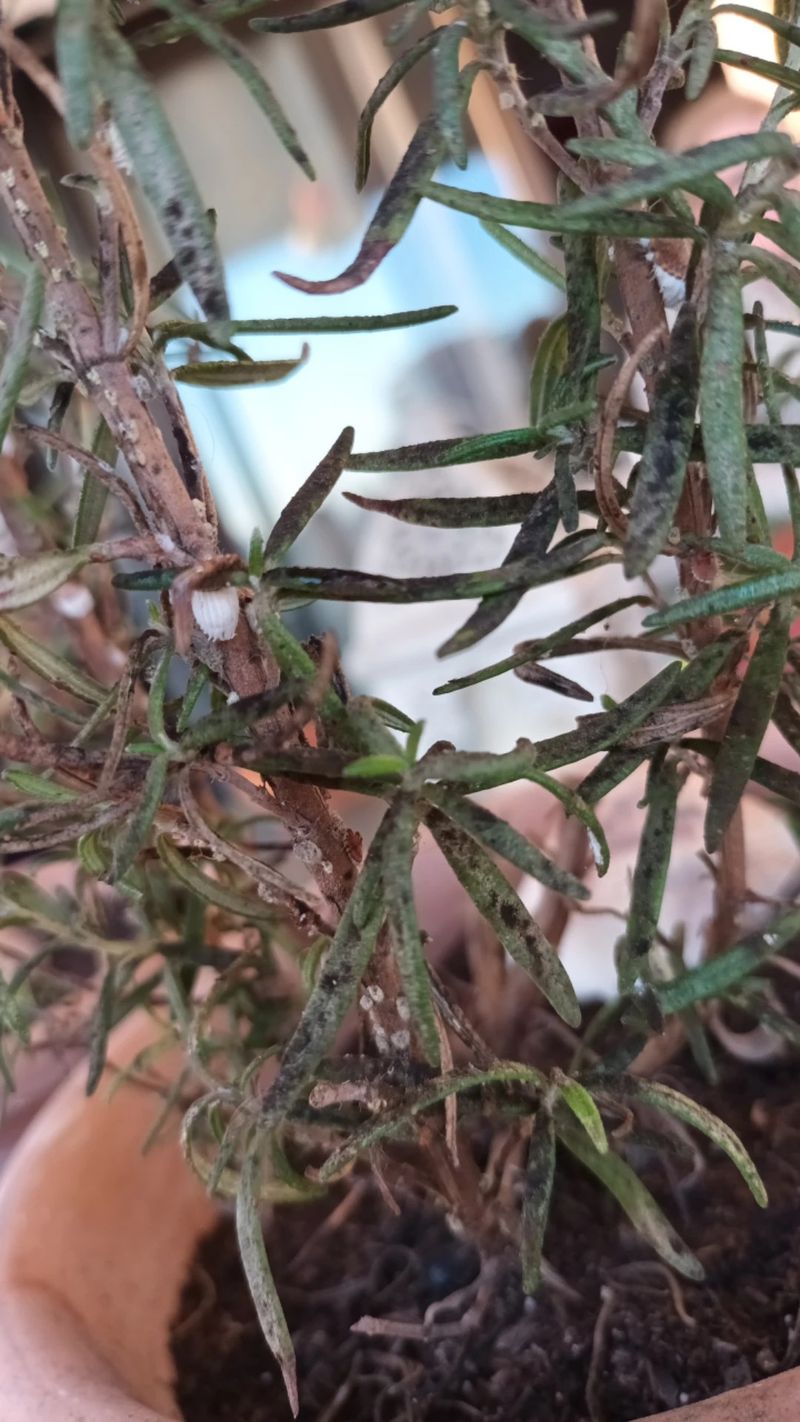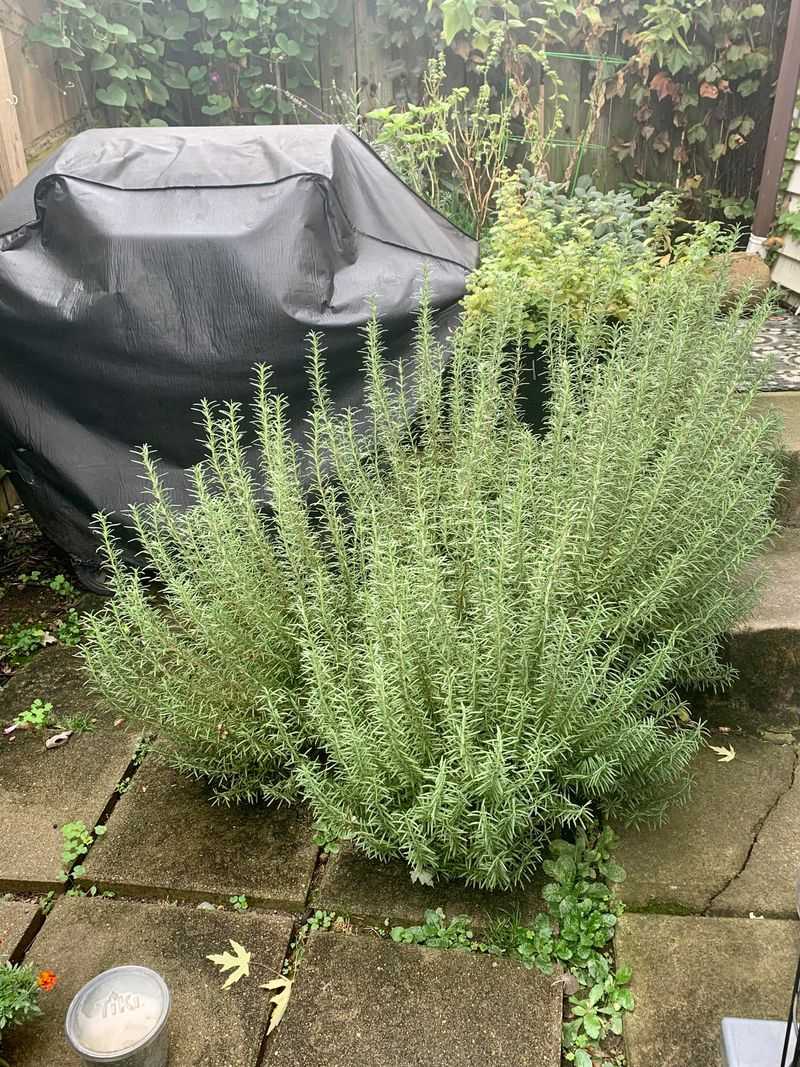Rosemary adds bold flavor to your cooking, but Pennsylvania winters can be rough on this sun-loving herb. Cold snaps and frost can quickly damage or kill it if left unprotected. Since rosemary hails from the Mediterranean, it prefers mild winters and well-drained soil.
Our chilly climate means you’ll need to give it a little extra care. I’ve found that bringing potted rosemary indoors or covering outdoor plants with frost cloth can make all the difference. With the right prep, you’ll enjoy fresh herbs year after year.
1. Bring Your Rosemary Indoors Before First Frost
Pennsylvania’s first frost usually arrives in October, and rosemary can’t handle temperatures below 30 degrees Fahrenheit. Moving your plant inside when nighttime temperatures drop to around 40 degrees gives it time to adjust.
Choose a sunny spot near a south-facing window where it’ll get at least six hours of light daily. Your rosemary will appreciate the warmth and protection from harsh winter winds that could damage its delicate branches.
2. Select The Right Container With Proper Drainage
Rosemary hates soggy roots more than almost anything else. Pick a container with multiple drainage holes at the bottom to prevent water from pooling.
Terra cotta pots work beautifully because they’re porous and allow excess moisture to evaporate through the sides. Make sure your pot is at least two inches wider than the root ball to give your plant room to grow throughout winter months without becoming root-bound or cramped.
3. Adjust Your Watering Schedule For Indoor Conditions
Indoor heating systems dry out the air quickly, but that doesn’t mean your rosemary needs constant watering. Check the soil by sticking your finger about two inches deep into the dirt.
Water only when the top layer feels completely dry to the touch. Overwatering causes root rot, which kills more indoor rosemary plants than underwatering ever could. Aim for watering every seven to ten days, depending on your home’s humidity levels.
4. Provide Adequate Light With Grow Lights If Needed
Winter days in Pennsylvania are short and often cloudy, making it hard for rosemary to get enough natural sunlight. Your plant needs six to eight hours of bright light daily to stay healthy and green.
If your windows don’t provide sufficient light, invest in an inexpensive LED grow light. Position it about six inches above your plant and run it for 12 hours each day to supplement natural light and prevent leggy, weak growth.
5. Maintain Proper Temperature And Humidity Levels
Rosemary prefers cooler indoor temperatures between 60 and 70 degrees Fahrenheit during winter dormancy. Avoid placing your plant near heating vents or radiators that blast hot, dry air directly onto the leaves.
Pennsylvania homes can get quite dry in winter, so mist your rosemary lightly once or twice weekly. You can also set the pot on a tray filled with pebbles and water to create humidity without waterlogging the roots.
6. Prune Strategically To Encourage Bushy Growth
Regular trimming keeps your rosemary compact and prevents it from getting tall and spindly indoors. Snip off the top two inches of stems every few weeks, making cuts just above a leaf node where new growth emerges.
Use these clippings in your cooking instead of letting them go to waste. Pruning also improves air circulation around the plant, reducing the risk of fungal diseases that thrive in stagnant indoor air during winter months.
7. Watch For Common Indoor Pests Like Spider Mites
Dry indoor conditions create the perfect environment for spider mites and aphids to attack your rosemary. Inspect the undersides of leaves weekly for tiny webs or small insects crawling around.
If you spot pests, spray the entire plant with a mixture of water and a few drops of dish soap. Rinse thoroughly after 15 minutes and repeat weekly until the problem disappears. Catching infestations early prevents serious damage to your precious herb.
8. Transition Your Plant Back Outdoors Gradually In Spring
When Pennsylvania temperatures consistently stay above 40 degrees at night, usually in late April or May, your rosemary can return outdoors. Don’t rush this process or you’ll shock the plant.
Start by placing it outside for just two hours daily in a shaded spot, gradually increasing exposure to sun and outdoor conditions over two weeks. This hardening-off period helps your rosemary adjust to brighter light, temperature changes, and wind without suffering leaf burn or stress.

